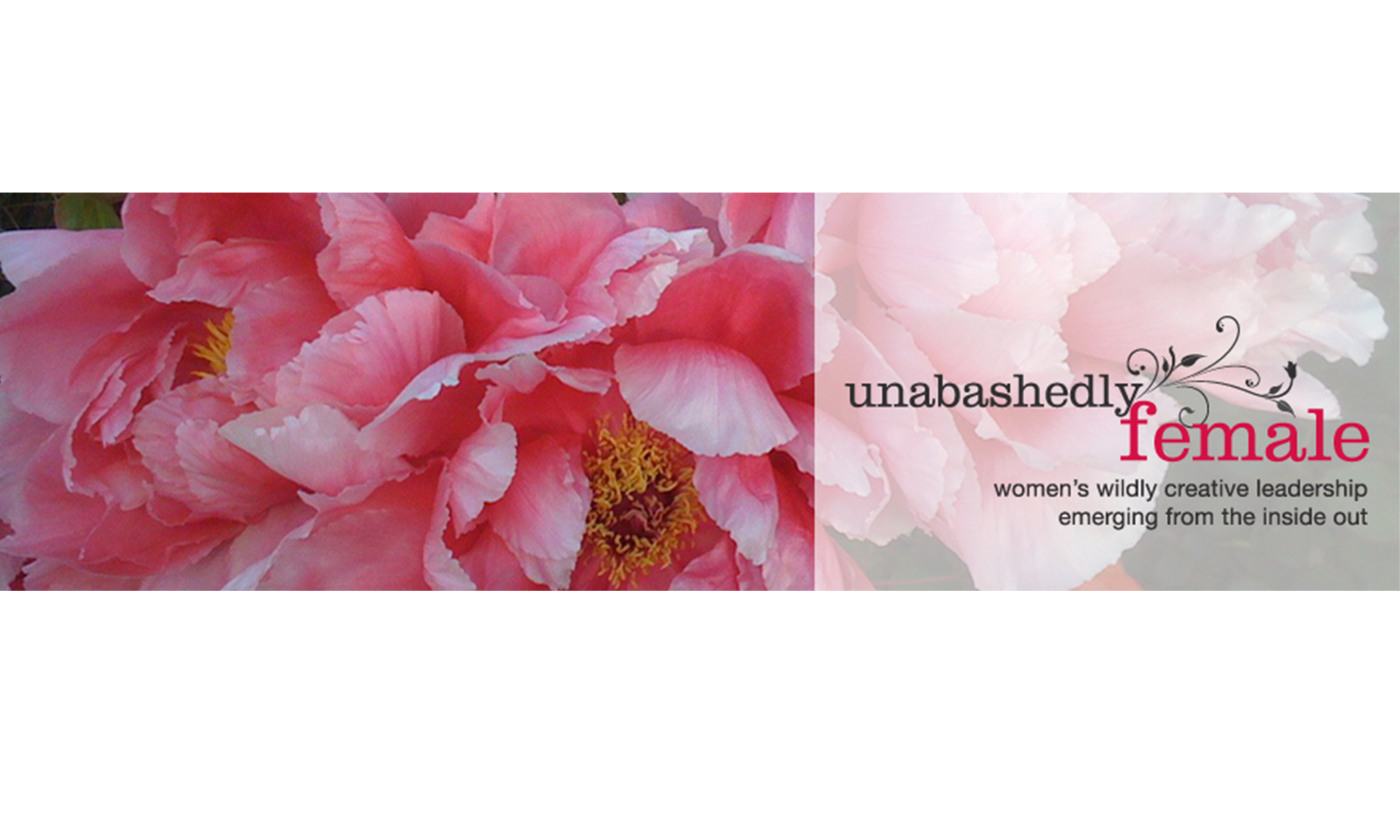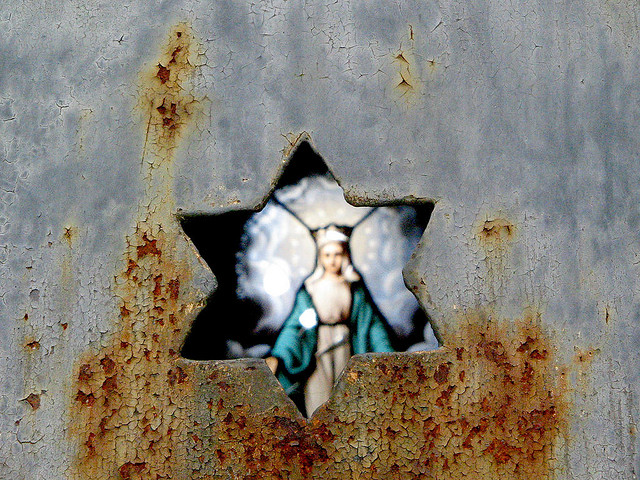Inner & Outer
I came across this beautiful image today (thank you Writing Our Way Home). It speaks to me of how it feels to be a human being filled with the light of the sacred. Perhaps the image of the sacred feminine speaks to me more than if it was a masculine representation. And, the fact it is feminine is fitting, for this image speaks to the immanence of the sacred nature of life.
Our inner and outer worlds are continually reflecting upon each other. For me, sometimes I see the beauty out there, sometimes I see it within, sometimes I don’t see it in either place, and sometimes it is everywhere, in everything.
We are human beings, completely fallible and physically imperfect. As we age, the body rusts, peels and detiriorates. Yet, within and without the cells that have come together to be the human we know ourselves to be, for however long we are alive, is a sacred light. While this image is decidedly judeo-christian, our light is of no religion, no culture, no race, no gender. It is undefined, unconditioned, un-everything we continually try to slap onto it so we can ‘know’ it.
Most-Human Moments
I have found that it is in my most human moments – those moments when those qualities I hate in myself, the ones that I least want to own, the ones that are hardest to admit to, can’t be denied – that the sacred is both infinitely far away and infinitely close at hand. It depends on how open I am to accepting what is true about that moment, about who I am, what I am, and how willing I am to fully and openly receive what is here.
When I feel the sacred to be far away, I know I am not allowing myself to be with what is true. Just as I push the truth away, I push the sacred away. If I receive the truth, I receive the sacred. They are the same – the truth and the sacred. To be with one is to be with the other. This isn’t the truth in any political, religious, cultural way – it is what is here. It is the truth of what I am experiencing in its totality, it is the truth of what is right here, right now. We know this truth when we are not denying anything – not necessarily an easy thing to do.
When I see this aging body as it is, when I accept my fallibility, when I am courageous enough to share the wisdom I’ve come to know and how I am being called to serve the sacred (again, not easy things to let go of) the pushing, grasping, and trying fall away and all I am left with is what is here. And, it’s a glorious ‘all’ to be left with. It is all that is. The rest, the pushing, grasping and trying were just the way I’ve learned to obscure my humanness – and I’ve poignantly come to see it is how I learned to obscure the divine.
A month or so ago,
I was in a retreat. We were doing a partner exercise. We were sitting in meditation across from our partner, and then we opened our eyes and were just with each other. I underline just, because this can be one of the hardest things to do…to just be with each other. As we sat, I noticed I was hiding the deeper parts of me. I could see it. And so, with a desire to really go into the painful places, I revealed another layer. Tears came to my eyes. Her expression did not change. Yet, when we finished and we shared what we had experienced in each other, my partner revealed that she distinctly noticed when I chose to reveal, that what first had been a pleasant and fairly deep experience of me, became richer and more human. She experienced my revealing this deeper layer in a way that wasn’t about qualities of me, but instead simply a deeper and richer experience of what I was revealing. It was more human, she said, especially when she noticed my tears.
Just this morning,
I was dressing. I stood naked in front of my mirror. Thoughts crossed my mind about finding a new life partner. Will someone find me desirable? Do I find myself desirable? Is there real beauty here? I take in my image. Gray roots. Wrinkles. A dancer’s body that is both aging and muscular. When I allow myself to see it all, I soften and notice space.
Then, I sit down to write. I’m writing a book. There are moments of clarity, then moments of fogginess. Again, questions run through my mind. Will anyone find value in these word? What door am I not willing to open? What matters here? Why would anyone care? And I found myself wondering how I can really answer these questions, not as a way to avoid but a way to go deeper into the truth. Perhaps there is nothing here in these words. Just maybe there is nothing. Then, I notice when I accept these things, I once again soften and notice space.
I want to share the truth. There is less resistance than there used to be, and there is still some. Sometimes that ‘rust’ is so hard to acknowledge and own – even to oneself. This is what is true right now. This is sacred, too. Even the hiding of the truth, if we can just be with it, can bring more compassion to ourselves. It can be a bypass, and it can be an opening.
Female Embodiment
As women, we live our spirituality through our bodies, through opening to the sacred nature of our bodies. All experience in these bodies is sacred. All of it.
Every way you might describe the sacredness of divinity can be used to describe the sacredness of your female body.
There is no separation between the wrinkling, aging skin of your body and the light-filled, hands-open Love that knows itself through touch on that very same skin.
This Love experiences the aliveness inherent in what It is through the exquisiteness of life itself – the full depth and breadth of life, the full spectrum of you and your experience.
A Practice:
Take a moment to notice how this image reflects you – the ‘you’ you believe yourself to be and the ‘you’ you long to know. Yes, this image is religious, and yes, there is a way to take in the sacredness of the image while letting go of its religiosity. Notice how you can be aware of both. Then, just be with it all – honestly and openly. Push nothing away. Pull nothing toward you. Just receive it all.
Image: ‘Judeo-Christian glimpse in Cimetière du Père-Lachaise’ by John Althouse Cohen,
![]()
![]()  Some rights reserved (CC BY-ND 3.0)
 Some rights reserved (CC BY-ND 3.0)

